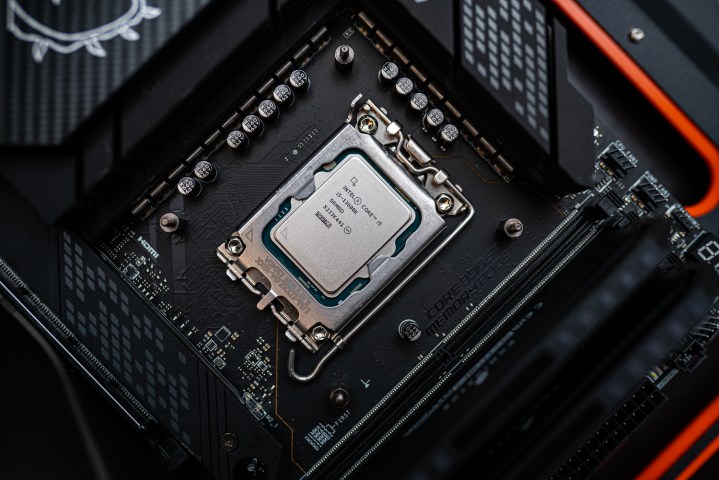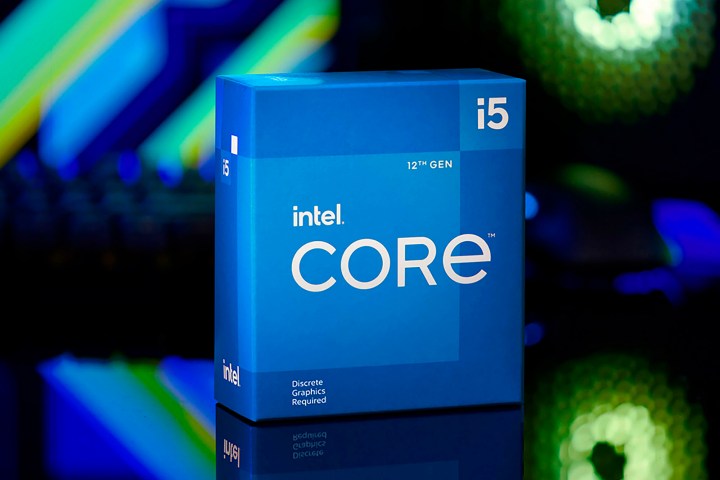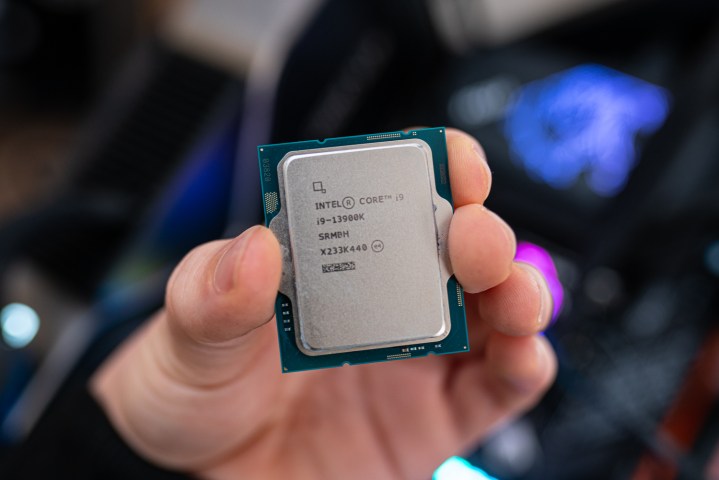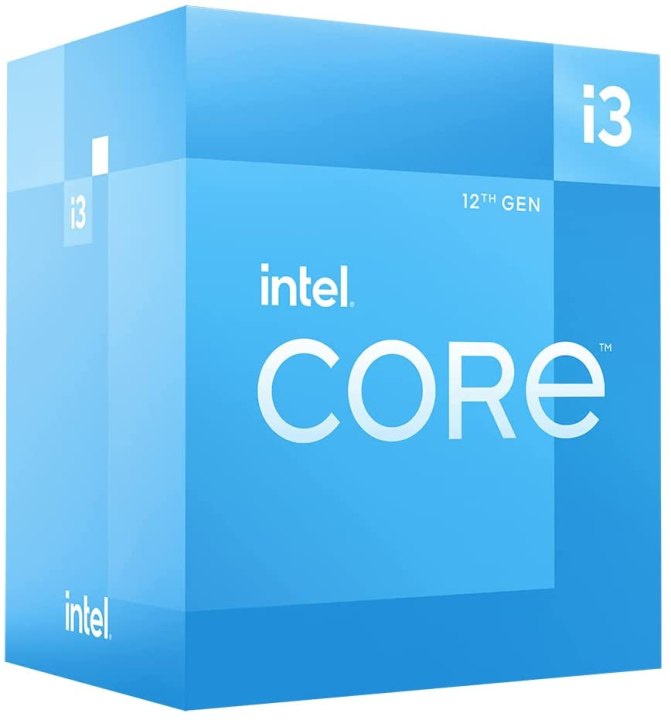
Jacob Roach / Digital Trends
When considering what the best processor is for your PC, Intel offers stiff competition in productivity and gaming, despite facing downAMD’s Ryzen 7000 and Ryzen 9000 CPUs. Intel’s parts just need a bit more power to do it.
Although the Core Ultra 9 285K is the latest flagship CPU from Intel, it only just scrapes onto this list. There are lot of CPUs we’d recommend instead, and they all feature here as part of the best Intel CPUs you can buy in 2024.
Note: Some reports have indicated that the Core i9-13900K and the Core i9-14900K have stability problems. It’s an ongoing investigation, but definitely something to consider.

Jacob Roach / Digital Trends
Intel Core i5-13600K
The best Intel processor
Pros
- Cheaper than AMD competition
- Support for 600-series motherboards and DDR4
- Solid multi-core improvements
- Surprising gen-on-gen improvements
Cons
- High power demands
- Small gaming performance gains
Why you should buy this: It’s inexpensive, packed with cores, and offers much more performance than its price would suggest.
Who it’s for: Gamers and power users who want peak performance without breaking the bank.
What we thought of the Intel Core i5-13600K:
The dilemma between Core i5 and Core i7 is always present with Intel processors, but the Core i5-13600K changes that dynamic. It’s much cheaper than the 14700K while offering similar performance in both productivity tasks and gaming. In some cases, it even beats down the flagship Core i9-13900K, making it one of the best CPUs you can buy right now.
It’s even competitive with the new-gen 265K and 285K for gaming, which is embarrassing for Intel, but great for budget-minded gamers.
For around $220, you’re getting a 14-core CPU with clock speeds upward of 5.1GHz, which would have been unheard of even a couple of years ago. Not all of those 14 cores are built equally, though. Similar to Intel’s previous generation, the Core i5-13600K mixes performance (P) cores and efficient (E) cores. With the Core i5-13600K, you’re getting six P-cores and eight E-cores.
The six P-cores are more than enough for gaming, which is what allows the Core i5-13600K to compete with AMD’s Ryzen 5 7600X at a similar price. It’s the extra E-cores where Intel shoots ahead, though, offering better multi-core performance in demanding tasks like video encoding and rendering.
You can overclock it for added performance too, helping it compete more readily with higher-end options in gaming and productivity.
For additional savings, look out for the 13600KF, as it can often be found for a few dollars cheaper. If you want to stretch your budget a bit further, the 13700K isn’t much more and gives you a couple of extra cores to play with for increased performance in select apps and games.

Intel Core i5-13600K
The best Intel processor

Intel
Intel Core i5-13400F
The best budget Intel processor
Pros
- Excellent value
- 10 cores on a recent architecture
- Fantastic gaming performance
Cons
- No integrated graphics
- Doesn’t support overclocking
Why you should buy this: It’s inexpensive while still offering highly competitive performance.
Who it’s for: PC builders on a tight budget that only need a few cores.
What we thought of the Intel Core i5-13400F:
Intel always follows up its main releases with more budget-friendly options as a generation goes on, and unfortunately, they don’t always get the limelight they deserve. That couldn’t be more true than it is with the Core i5-13400F. For not much more than $150, you get a seriously powerful CPU for gaming and anything else besides.
This one comes from the Intel 13th generation, which isn’t exactly cutting-edge, but don’t let that scare you off. The Core i5-13400F opts for six performance cores and four efficiency cores, giving it strong multithreading performance, at a fair price.
Gaming is where the chip shines most, oftentimes only taking a backseat of 5% to 10% compared to the more expensive Core i5-13600K. You can push the processor further by removing its power limit, too, allowing it to rival even the Core i9-12900K from a couple of generations back. That’s a lot of CPU power for around $150.
There are a couple of caveats for this one, though. For starters, it doesn’t support overclocking, but you can still remove the power limit for a performance boost. In addition, it doesn’t include integrated graphics, so you’ll need to pair the CPU with one of the best graphics cards. You can pick up the Core i5-13400, which is the same CPU with integrated graphics, but it’s about $25 more expensive.

Intel Core i5-13400F
The best budget Intel processor

Jacob Roach / Digital Trends
Intel Core i9-14900K
The fastest Intel processor for gaming
Pros
- Big improvements in gaming performance
- Same pricing as previous generation
- Works with LGA1700 socket
- AI-assisted overclocking on 14900K
Cons
- Minor productivity improvements
- Still slower than AMD 3D V-Cache chips
- Still very power hungry
Why you should buy this: It’s the most powerful Intel CPU for gaming you can buy right now.
Who it’s for: Anyone upgrading from 12th-gen or older.
What we thought of the Intel Core i9-14900K:
Intel’s Core i9-14900K is a refresh, and because of that, it doesn’t bring major performance improvements to the Core i9-13900K, which we’ll get to next. For most people, the Core i9-13900K is still the CPU to buy. If you’re looking for the absolute best gaming performance, though, the Core i9-14900K offers it. The 285K might be newer, but it falls short in too many games to be recommendable.
The 14900K is close in gaming performance to AMD’s Ryzen 9 7950X3D, and weak productivity tasks, such as compression, are better with the new 14th-gen chips. However, areas like rendering and transcoding remain largely unchanged compared to the previous generation.
There’s no upgrade path with this chip, though. Next time you upgrade, you’ll need a new motherboard too.

Intel Core i9-14900K
The fastest Intel processor for gaming

Jacob Roach / Digital Trends
Intel Core i9-13900K
The best high-end Intel processor
Pros
- Cheaper than AMD competition
- Support for 600-series motherboards and DDR4
- Solid multi-core improvements
- Surprising gen-on-gen improvements
Cons
- High power demands
- Small gaming performance gains
Why you should buy this: It’s the best bang for your buck for high-end value.
Who’s it for: High-end enthusiasts who don’t mind spending up for the best of the best.
What we thought of the Intel Core i9-13900K:
The best Intel CPU on the market right now isn’t the Arrow Lake flagships, or even the 14th-generation top dogs, but Intel’s Core i9-13900K, and that’s surprising because it’s not even the most expensive. It’s still a pricey chip, but the Core i9-13900K manages to undercut AMD’s competing Ryzen 9 7950X while offering better performance in many cases.
No small part of that performance advantage is that the Core i9-13900K comes with 24 cores. You get eight P-cores and 16 E-cores, giving you a total of 32 threads to work with. Even more impressive, the processor can boost up to 5.8GHz out of the box, offering some of the highest clock speeds available in a desktop CPU right now.
Despite sporting the 13th-gen Raptor Lake architecture, you can still use older 600-series motherboards and DDR4 memory with the Core i9-13900K, too. That makes it a much more compelling (and cheaper) upgrade path if you haven’t jumped to DDR5 quite yet.
The only downside of the Core i9-13900K is that it’s too powerful. It runs hot and draws a lot of power, and in tasks like gaming, the cheaper Core i5-13600K offers almost identical performance. If you need peak horsepower, though, nothing beats the Core i9-13900K.
The 285K is worth considering too, as it is much faster than this chip in productivity, but the gaming performance is much less impressive.

Intel Core i9-13900K
The best high-end Intel processor
Intel Core i3-12100F
The best Intel processor under $100
Pros
- A step-up over the Core i3-10100F
- Suitable for light gaming and daily use
- Good performance for the price
Cons
- Requires a discrete graphics card
Why you should buy this: It’s a cheap, yet decent current-gen processor that costs around $100.
Who’s it for: Users on a budget who still want a versatile CPU.
What we thought of the Intel Core i3-12100F:
It’s not part of the latest generations of Intel chips, but for around $80, the 12100F is a steal for entry level gaming and productivity.
Equipped with four cores and eight threads as well as clock speeds reaching up to 4.3GHz, this processor is a bit of an oddity in the Alder Lake lineup, as it doesn’t share the hybrid architecture of its more expensive siblings and instead serves up only P-cores. That doesn’t make it unsuitable at all, however, and it will carry its own weight through both gaming and various daily tasks. It may not be your first choice if you want something truly powerful, but if you’re looking to keep the costs low, this should be your go-to.
If you can find it for comparable money, the 14100F is about 10% faster and worth grabbing, but otherwise the 12100F is the value king for Intel in 2024.

Intel Core i3-12100F
The best Intel processor under $100

Jacob Roach / Digital Trends
Intel Core Ultra 9 285K
Best Intel CPU for productivity
Pros
- Insane efficiency improvements
- Delivers multi-threaded performance gains without Hyper-Threading
- Runs very cool in games
- A lot of headroom for CPU and memory overclocking
Cons
- Gaming performance struggles
- Inconsistent productivity performance
- High-end memory required for best experience
Why you should buy this: It’s Intel’s fastest processor for productivity yet.
Who’s it for: Professionals who specifically want to use Intel CPUs.
What we thought of the Intel Core Ultra 9 285K:
In our review, we called the Intel Core Ultra 9 285K impressive, but not necessarily good. That’s a fair summation, because while it blows the doors off many professional and creative applications, it is very much worse in gaming than the best CPUs from recent years, and there are even some non-gaming apps that don’t fair as well, either.
That’s partly because this is a very new chip design with a new architecture and lacking in simultaneous multi-threading, but it makes full use of those cores either way, delivering awesome performance in a wide range of apps. It’s also far more efficient than recent Intel flagships have been, which is a welcome change.
This is not a good CPU for gaming though. While it’s fast in some games, it’s much slower in others, and AMD’s gaming CPUs blow it out of the water.
If you aren’t married to Intel, AMD’s Ryzen 9 9950X is a very viable alternative, too, with much more consistent performance.

Intel Core Ultra 9 285K
Best Intel CPU for productivity
Frequently Asked Questions
What’s the difference between K and F Intel processors?
Intel uses multiple suffixes to indicate different features, but “K” and “F” are among the most common. “K” processors are unlocked, so you can overclock them with a compatible motherboard. “F” processors don’t come with integrated graphics, so you’ll need a dedicated graphics card. You may even find a “KF” processor, indicating that it’s unlocked and requires discrete graphics.
You can usually find variants of Intel’s leading i9, i7, and i5 processors with either or both suffixes. If you’re planning on building a gaming computer, you can save a few dollars by purchasing the “F” variant of a processor. On the other side, “K” processors are slightly more expensive with their overclocking capabilities. If you want a full breakdown on Intel’s naming scheme, make sure to read our CPU buying guide.
How good are AMD Ryzen processors compared to Intel?
Intel Core and AMD Ryzen both offer excellent processors at different price points and in different forms, so one brand isn’t definitively better than the other. In 2024, though, AMD’s X3D CPUs are the best for gaming, while Intel’s lineup tends to offer more general performance, at the cost of a higher power draw. The newer AMD Ryzen processors pack a lot of cores and perform well, so they’re still very capable CPUs, but they’re a little more specific in what they’re good for.
In the mobile world, Intel used to dominate. Now, you can find devices with AMD Ryzen processors, too, and they perform great. That said, there is still a far greater number of machines that come with Intel processors, and they stack up well against the AMD competition.
How do you know which processor is best for your needs?
To find the best processor for your needs, you need to consider the applications you want to run. If you’re into gaming, for example, a processor with strong single-core performance is a good choice because games usually stress only a handful of cores at a time. On the other hand, content creation applications like Adobe Premiere Pro and DaVinci Resolve can take advantage of a greater number of cores, so a processor with a lot of cores is better for them.
Those are good rules to follow. Games favor a fast processor over one with a lot of cores, and content-creation apps prefer more cores over faster ones.
How can you tell if a PC processor is any good?
The best way to tell if a PC processor is good is to look at individual benchmarks. Specs like core count and clock speed don’t tell the full story — they only show what the processor is capable of within its own range of products. If you’ve settled on a certain brand or series, however, looking at core counts and clock speeds can show you where the processor sits in the range.
If you want to test your own processor, there are plenty of tools available. Cinebench is a great benchmarking tool that focuses solely on the processor, while PCMark 10 provides an overview of performance across a suite of day-to-day tasks.
Make sure you’re buying a CPU from a recent generation that has at least six cores, and you should be alright.
How does Intel’s CPU naming scheme work?
Intel’s naming scheme can get a little confusing sometimes, but once you know your way around it, you’ll be able to navigate every processor by heart without needing to check what it does.
Let’s assume the processor you’re trying to look up is called “Intel Core i9-14600K.” The first part, Intel Core, refers to the brand of the processor. Intel has several brands that are not Intel Core, such as the low-end Intel Pentium or Intel Celeron. It also has some newer mobile CPUs, branded Core Ultra.
The second part is the brand modifier. This is important and refers to how powerful a particular CPU is within its generation. In adition to the budget i3, Intel also offers i5, i7, and i9. The i5 and i7 lines are typically midrange to high-end, and the i9 is reserved for high-end processors.
Moving on to the numerical part of the name, the first two digits refer to the generation of the processor. As an example, Intel’s 14th-generation processors, Raptor Lake, all start with a “14.” The final three digits refer to the specific model and also go up depending on how good a model is.
The letter at the end refers to the type of processor. There are many variants, so check them out on Intel’s website if you want a full list. The most common ones include:
- K – Unlocked (overclockable)
- F – No integrated graphics
- S – Special edition
- T – Low power, lower performance

